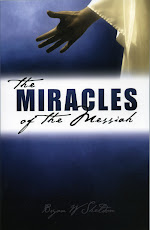The Law was limited in its ability to deal with sin
The Day of Atonement (Yom Kippur) was, and still is, the most important day in the religious calendar of Israel Israel Temple
The Hebrew word whereby the doctrine of the atonement is usually set out in the Old Testament is ‘kaphar’, the original meaning of which was ‘to cover’ or ‘to shelter’. Strong’s Hebrew dictionary has ‘to cover’ as the initial meaning in all forms of the word. “1 to cover, purge, make an atonement, make reconciliation, cover over with pitch. 1a (Qal) to coat or cover with pitch. 1b (Piel). 1b1 to cover over, pacify, propitiate. 1b2 to cover over, atone for sin, make atonement for. 1b3 to cover over, atone for sin and persons by legal rites. 1c (Pual). 1c1 to be covered over. 1c2 to make atonement for. 1d (Hithpael) to be covered.” (Strongs No. 3722) The name of the mercyseat, ‘kapporeth’ is derived from ‘kaphar’, and is itself a covering, a lid to the ark of the covenant, in which was kept the two tablets of stone on which were engraved the Decalogue, the foundation of the Law of God.
What is suggested here is the truth that the sacrificial system as utilized by the Levitical priesthood could not cleanse sin, only cover it. This is a distinct weakness in the economy that prevailed during the dispensation of Law. The writer of the Hebrew letter remarks on this weakness. “For it is not possible that the blood of bulls and goats could take away sins.” (Heb. 10:4)
Summary
a. to bring order and discipline to the nation.
b. to provide rules for righteous living and righteous behavior.
c. to provide a way of repairing the relationship with God (for both individuals and the nation) when that relationship had fractured because of sin.
d. to keep the nation free from the contamination of other idolatrous nations, whose idea of righteousness did not rise to the heights demanded by the God of the Hebrews.
e. to educate and train the nation in such a way that it would be ready and prepared, in the fullness of time, to receive its Messiah, who would also be the Savior of the world.
What the Law was not designed to do was to provide a permanent rule for righteous living, nor a permanent answer to the problem of sin.
Next Time : The Land Covenant





No comments:
Post a Comment